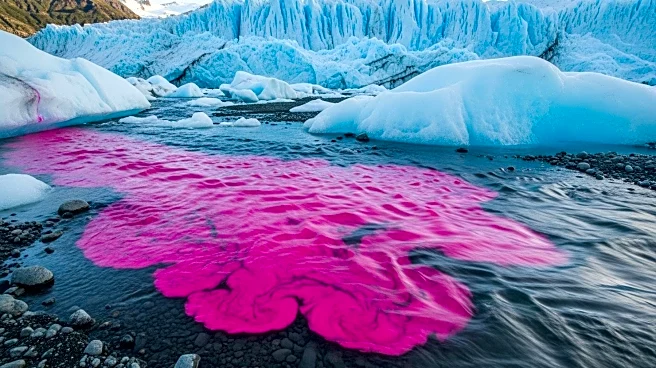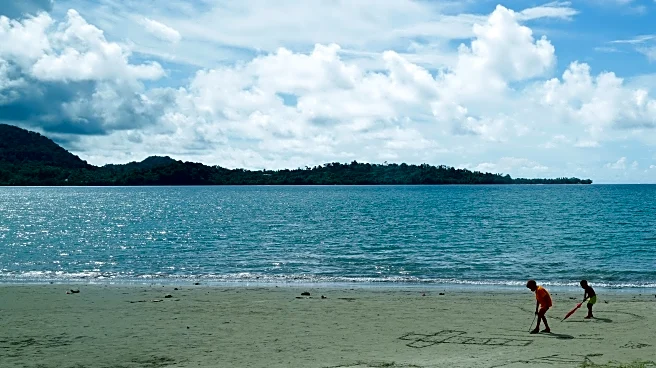What's Happening?
Researchers from the Swiss Federal Institute of Technology in Zurich have dyed the meltwater of the Rhone Glacier pink to better monitor its flow rate. The glacier, which has lost 60% of its volume since 1850, is under threat from rising temperatures. The pink dye serves as a visual aid, allowing scientists to track the movement and speed of the meltwater more effectively. This innovative approach aims to provide insights into the glacier's response to climate change.
Why It's Important?
The Rhone Glacier's significant volume loss is indicative of broader climate change impacts on alpine glaciers. By monitoring the meltwater flow, researchers can gather data on how quickly glaciers are retreating, which is vital for understanding future water availability and ecosystem changes. The study highlights the urgent need for climate action to mitigate the effects of global warming on natural landscapes. The research also contributes to the development of new methods for tracking environmental changes.
What's Next?
The research team plans to continue monitoring the Rhone Glacier's meltwater flow using the pink dye method. This data will be used to model future glacier behavior and assess the impacts of climate change on water resources. The findings may inform policy decisions regarding climate adaptation strategies and conservation efforts in alpine regions. Further studies could explore the application of similar techniques to other glaciers worldwide.
Beyond the Headlines
The use of pink dye in glacier research raises ethical considerations regarding environmental impact. While the dye is non-toxic, researchers must ensure that their methods do not harm local ecosystems. The study also prompts discussions about the role of innovative technologies in climate science and the balance between scientific advancement and ecological preservation.












